Try GOLD - Free
Cache & carry
African Birdlife
|September/October 2022
The feeding and social behaviour of honeyguides

If you have a bird-feeding site in your suburban or rural garden and live in a region where honeyguides occur, the pleasure you derive from your efforts can be greatly enhanced if you can secure a source of beeswax. With an uncanny ability to track down the presence of beeswax or honeycomb, a honeyguide will become a regular visitor to the garden, even if only an intermittent supply of this unusual food source is provided.
Not only are members of the honeyguide family (Indicatori-dae) typically considered to be the only African vertebrates capable of digesting wax derived from either honeycomb (honeyguides) or scale insects (honeybirds), they also have a few other unusual characteristics. All members are brood parasites and all are probably polygynous; hatchlings have hooked bills for killing the young of their hosts; and all members have zygodactylous feet. The Greater Honeyguide Indicator indicator is renowned for its remarkable cooperative relationship with human honey gatherers, honey badgers and baboons.
Being a hobbyist beekeeper gives me perhaps an above-average opportunity to witness the connection between these interesting birds and our all-important honey bees. Recent observations at the bee-feeding site in my East London forest-edge garden have shown me the feeding and social behaviour displayed by both immature and adult Greater and Lesser honeyguides. As the birds were not individually marked, I was unable to ascertain how many independent individuals of each species and age or sex class visited the feeding site, but my observations nonetheless suggested some interesting patterns.
This story is from the September/October 2022 edition of African Birdlife.
Subscribe to Magzter GOLD to access thousands of curated premium stories, and 10,000+ magazines and newspapers.
Already a subscriber? Sign In
MORE STORIES FROM African Birdlife
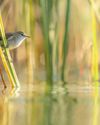
African Birdlife
stories begin at EYE LEVEL
ALTHOUGH I HAVE been taking photographs since 1998, it wasn't until 2019 that my hobby evolved into a serious pursuit. That's when I began to see photography not just as a means of capturing a moment, but as a form of art - something that can stir emotion, spark wonder and tell a deeper story.
1 mins
July/August 2025
African Birdlife
ALBERT the Wandering Albatross
Ahoy, shipmates, grab a pew and let me spin my yarn.
3 mins
July/August 2025
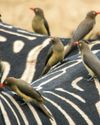
African Birdlife
I'll be back...
Southern African populations of oxpeckers were hit by triple hammer blows during the late 19th century and much of the 20th.
2 mins
July/August 2025

African Birdlife
BINDO and SABAP2
A match made in data science
2 mins
July/August 2025
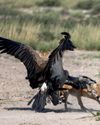
African Birdlife
PREDATORS of the pan
As regular visitors to Mabuasehube in the Botswanan sector of the Kgalagadi Transfrontier Park, we have often seen vulture feathers lying in the area of the waterhole at Mpayathutlwa Pan and have frequently observed a pair of black-backed jackals in the vicinity.
1 min
July/August 2025
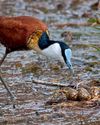
African Birdlife
Jacana & the egg thief
While on a photo expedition in the Richtersveld National Park with my brother Peter, we were watching one particular African Jacana on the Gariep River.
2 mins
July/August 2025
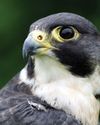
African Birdlife
A STRIPE FOR ANY OTHER PURPOSE?
Uncovering the adaptive complexities of falcons' malar stripes
2 mins
July/August 2025
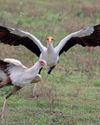
African Birdlife
grassland GLADIATORS
The Secretarybird is a highly soughtafter species for most birders on their first visit to Africa. It looks so strange, like a cross between a stork and an eagle. Even though it is widespread, occurring in almost any suitable habitat (grassland, open savanna and Karoo shrubland), it's generally uncommon.
1 mins
July/August 2025

African Birdlife
SECRETS SKY
Jessica Wilmot is the driving force behind BirdLife South Africa's Flyway and Migrants Project, working across borders to safeguard some of the planet's most threatened species and habitats. Supporting BirdLife International's East Atlantic Flyway Initiative, Jessica is at the heart of efforts to keep our skies alive with birds, particularly the enigmatic European Roller, which is her current focus and passion.
6 mins
July/August 2025
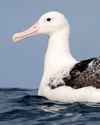
African Birdlife
Southern SIGHTINGS
Autumn is generally known to be quieter in terms of rarities across southern Africa, but the review period still had a few surprises for us, including a new species for the subregion. As always, none of the records included here have been adjudicated by any of the subregion's Rarities Committees.
3 mins
July/August 2025
Translate
Change font size
